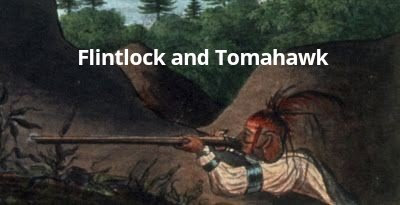Up on an auction site. Purports to be Richard Williams Royal Welch Fusilier 1750-1770. What do you think?
Subscribe to:
Post Comments (Atom)
-
Our colonial Marine unit gets some last minute instruction before going to fight the British. Pinterest for more.
-
This is the first stage of an excellent project. This is the corner tower of a recreation of the fort in the movie Drums Along the Mohawk...





Mark Urban included a copy of this in his book 'Fusiliers' purportedly as the uniform of the light company of the 23rd.
ReplyDeleteThat said the man illustrated does not have the red waistcoat associated with the light companies. Legwear seems to be trousers rather than breeches (if the drawing is an accurate representation) worn with half gaiters. The cut of the coat looks to be a bit short (fine for the light bobs) but the cut seems to be in the style of the 1768 warrant. The shoulder ornament might be wings but not as flamboyant as worn by some units or grenadiers to judge by the illustration. To be honest they are more reminiscent of officers epaulettes; is this an officer? The '68 warrant mandated two epaulettes for officers of the grenadier company and only one for those of the battalion company. There is no gorget or sword and he seems to have a firelock not a fusil so I suspect not. Especially as Richard Williams is not a name that appears in the 23rd in either the 1767 or 1778 Army Lists.
Equipment seems to be cartridge box and crossbelt with a what might be a bayonet belt worn under the coat and over the waistcoat as per 1768 warrant. There is no sign of the hatchet, powder horn & bullet bag one might expect for the light companies instigated in 1773. Both belts are white not black as would be expected for a light company
The long 'plaid' like thing coming down from the back of the collar occurs in the same place where the 23rd used wear a flash of black ribbons but that is surely coincidence as the flash dated from c.1808. The head wear looks right for the light company (there was no specific pattern IIRC) as does the plume which might be meant to represent the Prince of Wales crest? Light companies were re-introduced into Brit4ish infantry battalions in 1771 although some (eg 26th Foot) had maintained a picquet or 'Highland' company before that date. The 'plaid' like garment worn by the figure is very suggestive of a Scots influence - could it be an example of the 'Maude' considered to be of more use for light companies as considered by a Board of General Officers in 1771?
So in conclusion could this be an very early illustration of the 23rd's light company? Either a picquet/'Highland' company just before the formal re-establishment of light coys 1771 or just after before the full scale of equipment (red waistcoats, black leather equpiment, bullet bags and powder horns) had become established?
Thanks for putting this up, I hope that someone like NAM of the 23rd's Museum are able to buy this at the auction.
Nice find! Could be a cloak similar to those worn by Croatian Pandours in Imperial Austrian service. The Pandours and Grenztruppen may have influenced the British as they fought alongside their Hapsburg Allies in Flanders during the War of Austrian Succession (Parker, That Loose and Flimsy Order..., pp 49-54). See the site below for an etching by Johann S Mueller, 1743. and a Morier plate of a banalist and pandour from Baron Trenck's Corps. Note the mantle draped over the shoulder on the Morier painting.
ReplyDeletewww.britishbattles.com/frederick/battle-soor.htm
From the white crossbelt and waistbelt, do you think this is later than 1750-70 (1768 Uniform Regulations)? Interesting overalls/trousers tucked half-gaiters. That and the helmet suggest to me light infantry-that their commander was influenced by KuK Light Infantry, anyone know where he fought in the Seven Years War or War of Austrian Succession?
-Cincinnatus
http://johannfactotum.blogspot.com/